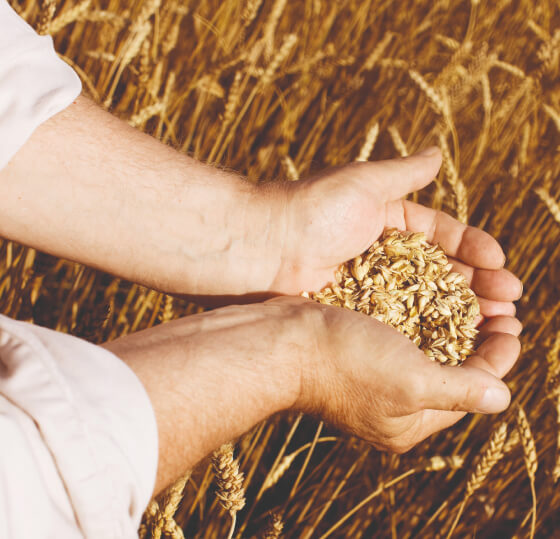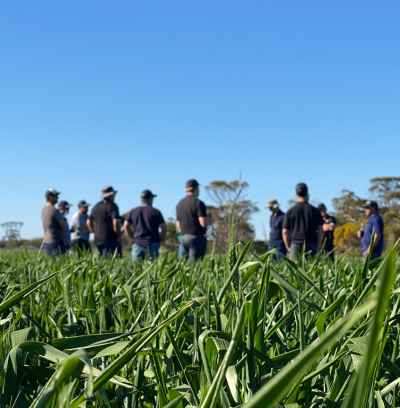
The bleeding continues in global corn markets with new contract lows on Chicago futures a regular event on the back of record yield potential in the United States, another big harvest in Brazil and China’s continued absence on the demand side.
After hitting a high of 482.5 US cents per bushel on February 20, the September corn futures contract has given up 99.75c/bu or 20.7 per cent of its value to close last week at 382.75c/bu. Since June 23, the contract has closed at a new low in 12 of the 34 trading sessions, with three of those coming last week, as the trade grapples with lacklustre demand against a backdrop of abundant supply. Over that six-week period, the September contract lost 45c/bu, or 10.5 per cent of its value.
The condition of the US crop remains conducive to big yields if the favourable seasonal weather conditions continue. The top 18 corn producing states account for around 92 per cent of the planted area, and as of August 3, the USDA rated the crop at 73 per cent good-to-excellent, unchanged week-on-week but six percentage points higher than the 67 per cent rating at the same time last year.
In the key producing states of Iowa, 14.2 per cent of the planted area, and Illinois, 11.6 per cent of the planted area, the crop was rated at 85 and 69 per cent good-to-excellent, respectively, compared to 87 and 71 per cent seven days ago and 77 and 81 per cent 12 months ago.
The next ranked states in terms of planted area are Nebraska and Minnesota, where the August 3 crop rating was 79 and 75 per cent good-to-excellent, respectively, compared to 77 and 74 per cent a week ago and 70 and 58 per cent at the same time last year. Collectively, these four states account for around 46 per cent of the area planted to corn in the US this year.
A steady crop rating at this time of the year is a positive yield signal, as corn conditions generally decline in August as temperatures rise and the thirsty crop gradually depletes soil moisture reserves. As of last week, 88 per cent of the corn crop was silking, the beginning of the reproductive phase, which means that the crop is hitting peak moisture dependence. Heatwaves have generally been short-lived this summer, even though temperatures have generally been above-average, leading to higher than normal growing degree days and faster crop growth.
Nighttime temperatures were reportedly higher than usual in July, which can be detrimental to production. While photosynthesis, the process of converting sunlight into energy, primarily occurs during the day, corn plants continue to respire at night, using the energy produced during the day for plant growth and maintenance. Cooler temperatures during the night are generally more beneficial for corn as they reduce plant stress and allow the plant to conserve energy and fill kernels, while warmer nights can increase respiration rates, potentially impacting yield.
Yield estimates for the US corn crop remain well above the 179.3 bushels per acre record set just a year ago. The USDA currently sits at the lower end of estimates on 181bu/ac, although it is highly likely that it will be revised higher when the August edition of the World Agricultural Supply and Demand Estimates is released this week. Data suggests that each year the corn crop is rated 70 per cent good-to-excellent or higher for the first week of June, final yield has been at or above trendline yield. The crop rating on June 8 was 71 per cent and trendline yield is 181.1bu/ac.
Respected row-crop analyst Dr Michael Cordonnier was unchanged at 182bu/ac in last week’s update and carries a neutral bias going forward. According to Cordonnier, the hot and humid weather experienced across the corn belt in July was generally beneficial for corn output, save for several isolated pollination issues. However, the good July precipitation is expected to have largely offset any pollination related production losses.
With a corn yield projection of 188.1bu/ac, financial services and market intelligence provider, StoneX, provided some downward pressure to US futures early last week, and has set the bar high for this week’s production update from the USDA. Informa Economics then followed up with a 186bu/ac peg to reinforce the negative price pressure.
The vastly divergent yield estimates are the big swinger when it comes to final production. Most of the analysts appear to be in the 183 to 185bu/ac range, but there are reported to be plenty of agronomists spruiking a 186 to 188bu/ac scenario.
The USDA’s production number is currently 398.9 million metric tonne off a harvested area of 86.8 million acres, or 35.1 million hectares. Applying the StoneX yield to that harvested area lifts output by a whopping 15.6MMT to 414.5MMT. Just where the USDA lands this week has the market guessing, but trade numbers are clustered around 184.4bu/ac, putting potential output at a record 406.4MMT.
Down in Brazil, harvest of the safrinha corn crop has entered the home straight. According to agribusiness consultancy AgRural, 81 per cent of the country’s second corn crop had been harvested by the beginning of August, 13 percentage points higher than a week earlier, but well below the 95 per cent reported a year earlier. Fieldwork “is expected to continue at an intense pace in the coming days”, AgRural said in a statement, supported by lower rainfall in formerly wet regions.
The USDA currently has Brazil’s corn output pegged at 131MMT, the second biggest crop ever after the 2023 harvest of 137MMT. Brazil’s national supply company (CONAB) currently has production pegged at 131.9MMT, while Cordonnier is a little higher at 134MMT. StoneX again finds itself an outlier, putting the total corn harvest at 139.4MMT after increasing its safrinha production forecast by 3 per cent to a record 111.7MMT. Yields are reported to be at record high levels in many regions, with even the late-planted corn surpassing yield expectations.
Call your local Grain Brokers Australia representative on 1300 946 544 to discuss your grain marketing needs.
Written by Peter McMeekin.



